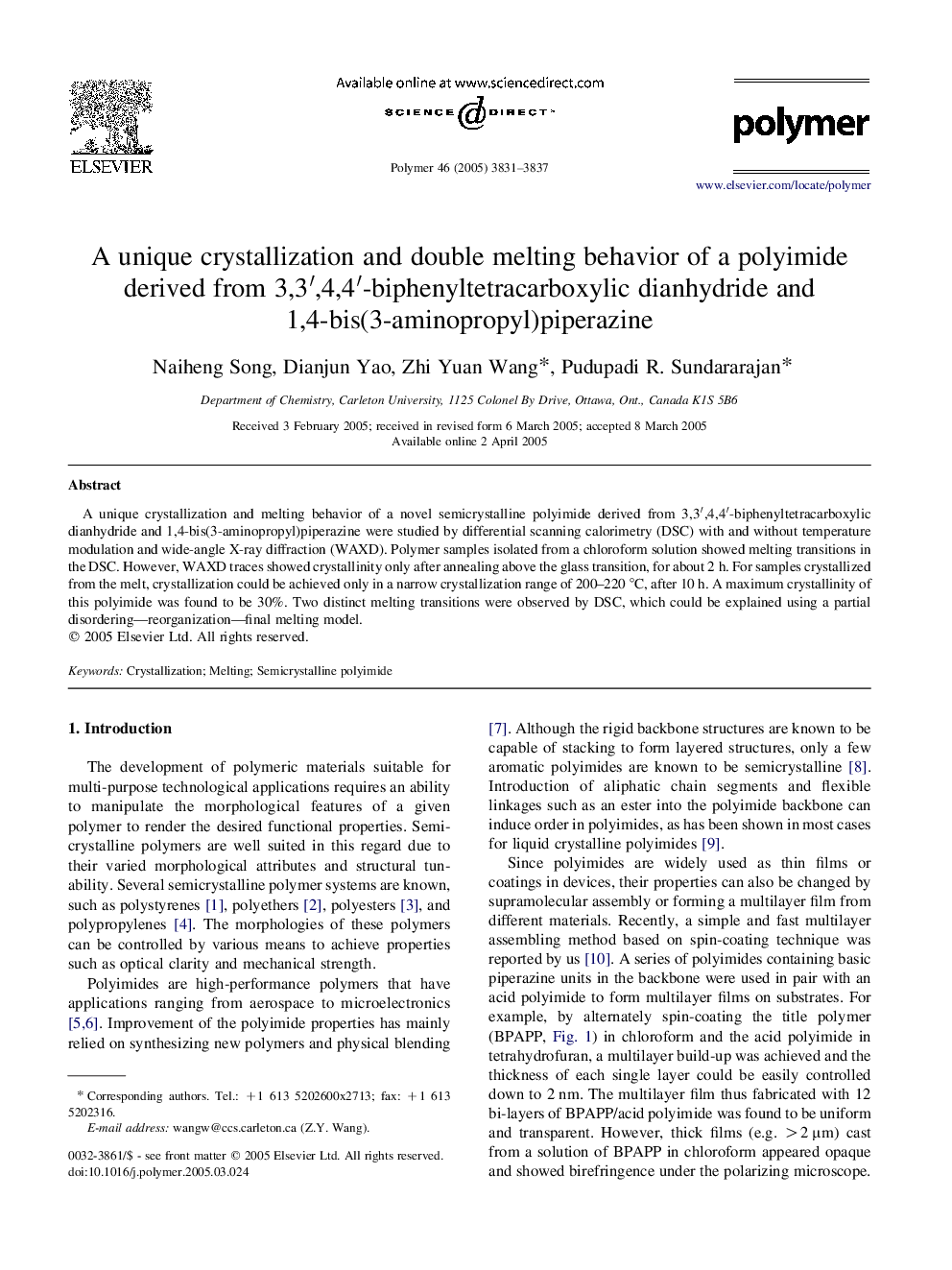| Article ID | Journal | Published Year | Pages | File Type |
|---|---|---|---|---|
| 5191337 | Polymer | 2005 | 7 Pages |
A unique crystallization and melting behavior of a novel semicrystalline polyimide derived from 3,3â²,4,4â²-biphenyltetracarboxylic dianhydride and 1,4-bis(3-aminopropyl)piperazine were studied by differential scanning calorimetry (DSC) with and without temperature modulation and wide-angle X-ray diffraction (WAXD). Polymer samples isolated from a chloroform solution showed melting transitions in the DSC. However, WAXD traces showed crystallinity only after annealing above the glass transition, for about 2 h. For samples crystallized from the melt, crystallization could be achieved only in a narrow crystallization range of 200-220 °C, after 10 h. A maximum crystallinity of this polyimide was found to be 30%. Two distinct melting transitions were observed by DSC, which could be explained using a partial disordering-reorganization-final melting model.
